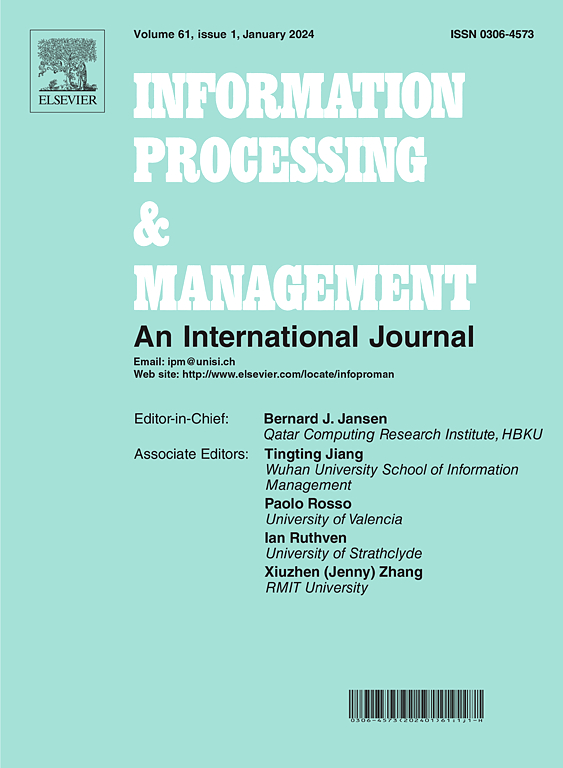Temporal-spatial hierarchical contrastive learning for misinformation detection: A public-behavior perspective
IF 7.4
1区 管理学
Q1 COMPUTER SCIENCE, INFORMATION SYSTEMS
引用次数: 0
Abstract
The widespread dissemination of misinformation on social media platforms significantly affects public security. Current methods for detecting misinformation predominantly rely on semantic information and social context features. However, they often neglect the intricate noise issues and unreliable information interactions resulting from diverse public behaviors, such as cognitive biases, user prejudices, and bot activity. To tackle these challenges, we propose an approach named TSHCL (temporal-spatial hierarchical contrastive learning) for automatic misinformation detection from the public-behavior perspective. First, the integration of a graph convolutional network (GCN)-based autoencoder architecture with a hybrid augmentation method is designed to model typical public behaviors. Next, node-level contrastive learning is designed to maintain the heterogeneity of comments in the spatial view under the influence of complex public behaviors. Finally, cross-view graph-level contrastive learning is designed to promote collaborative learning between the temporal sequence view of events and the spatial propagation structure view. By conducting temporal-spatial hierarchical contrastive learning, the model effectively retains crucial node information and facilitates the interaction of temporal-spatial information. Extensive experiments conducted on real datasets from MCFEND and Weibo demonstrate that our model surpasses the state-of-the-art models. Our proposed model can effectively alleviate the noise and unreliable information interaction caused by public behavior, and enrich the research perspective of misinformation detection.
错误信息检测的时空层次对比学习:公众行为视角
虚假信息在社交媒体平台上的广泛传播严重影响了公共安全。目前的错误信息检测方法主要依赖于语义信息和社会语境特征。然而,他们往往忽视了复杂的噪音问题和不可靠的信息交互,这些信息交互是由不同的公众行为造成的,比如认知偏见、用户偏见和机器人活动。为了解决这些挑战,我们从公众行为的角度提出了一种名为TSHCL(时空分层对比学习)的错误信息自动检测方法。首先,设计了基于图卷积网络(GCN)的自编码器结构与混合增强方法的集成,以模拟典型的公共行为。其次,通过节点层次的对比学习,在复杂公共行为的影响下,保持空间视角下评论的异质性。最后,设计了跨视图图级对比学习,以促进事件时间序列视图和空间传播结构视图之间的协作学习。该模型通过进行时空层次对比学习,有效保留了关键节点信息,促进了时空信息的交互。在mc挡泥板和微博的真实数据集上进行的大量实验表明,我们的模型优于最先进的模型。我们提出的模型可以有效缓解公众行为带来的噪声和不可靠的信息交互,丰富错误信息检测的研究视角。
本文章由计算机程序翻译,如有差异,请以英文原文为准。
求助全文
约1分钟内获得全文
求助全文
来源期刊

Information Processing & Management
工程技术-计算机:信息系统
CiteScore
17.00
自引率
11.60%
发文量
276
审稿时长
39 days
期刊介绍:
Information Processing and Management is dedicated to publishing cutting-edge original research at the convergence of computing and information science. Our scope encompasses theory, methods, and applications across various domains, including advertising, business, health, information science, information technology marketing, and social computing.
We aim to cater to the interests of both primary researchers and practitioners by offering an effective platform for the timely dissemination of advanced and topical issues in this interdisciplinary field. The journal places particular emphasis on original research articles, research survey articles, research method articles, and articles addressing critical applications of research. Join us in advancing knowledge and innovation at the intersection of computing and information science.
 求助内容:
求助内容: 应助结果提醒方式:
应助结果提醒方式:


